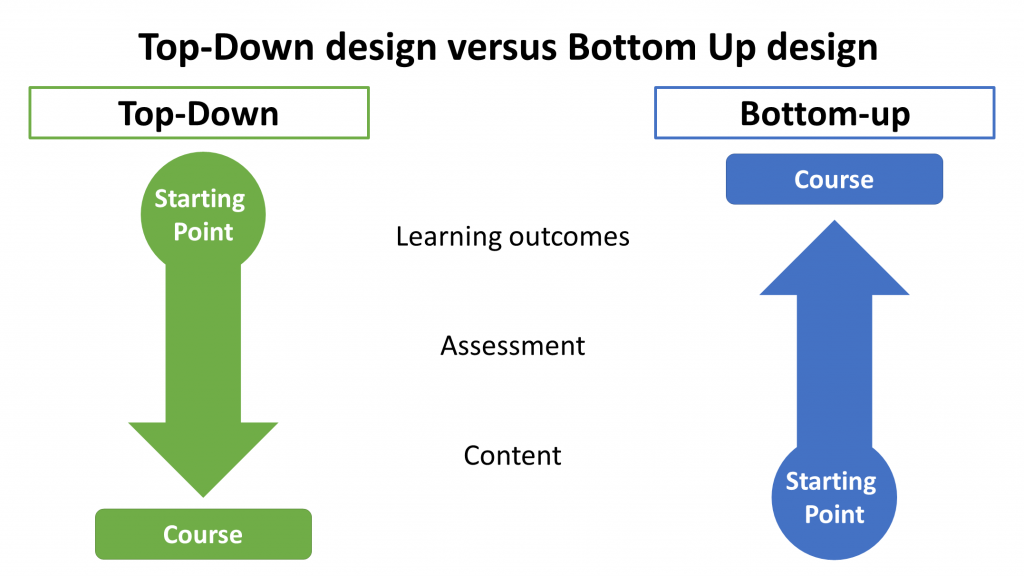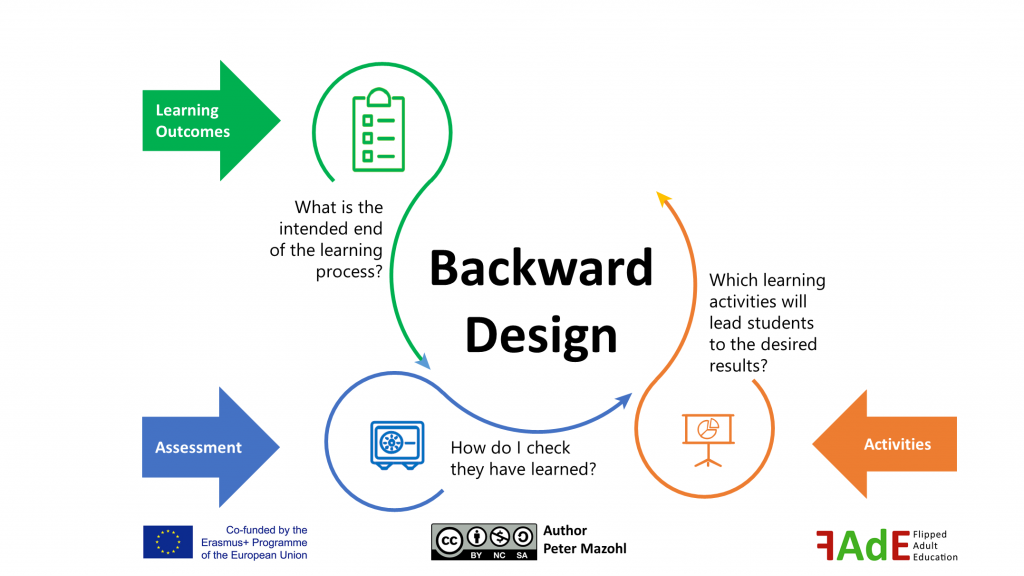Backward Design, which is used in education, is a process to design learning experiences and instructional techniques to achieve specific learning outcomes. This method can be counted to the top-down approaches.
Top-down versus Bottom-up
The top–down approach goes from the general to the specific, and the bottom–up approach begins at the specific and moves to the general. For designing a course this means that
| Top–down | Bottom-up | |
| Learning outcomes | … are at the beginning of the considerations | … are the last step of the planning |
| Learning content | … is created finally at the end of the design process | …. stands at the beginning of the design process |
Figure 1: Comparison of Bottom-up and Top-down development methods in Education (License CC 4.0 BY NC SA, Peter Mazohl, 2021)
The bottom-up design is influenced from the development of schoolbooks (in the 70th and 80th of the last century). The typical approach was content-centered and the schoolbook, that was well-developed from schoolbook publishers, acted as the “secret curriculum”. So, many teachers cared mainly about the learning content and tried to find well-fitting assessments to evaluate the knowledge of the students (in context with the taught content).
Today we have a completely different approach, which is reasonable. Learning is outcome-oriented, and these learning outcomes are usually competencies (or skills related to knowledge).
Backward Design – a crucial element in Flipped Learning 3.0
Flipped Learning calls for backward design as it is the only sensible and targeted method. The reason can be explained simply: People learn something with a specific goal – and that must be the starting point for all further considerations. This means that the starting point for the design of a learning unit or course can only be its goal (the learning outcomes).
Due to the fact that it is important to evaluate whether the learning process is successful, you have to implement some learning outcomes evaluations. These methods are normally formative assessments (also in combination with a final test).
After you have found out the learning goals and you know how to evaluate these learning outcomes you can start thinking about the best-fitting learning content and approaches to the actual learning process. These considerations will end in the development of the learning content and the creating of the learning/training material, which has to fit well to the intended use in the Individual Space or in the Group Space.
The following graphic shows a summary of the given considerations.
Figure 2: Backward Design Process (License CC 4.0 BY NC SA, Peter Mazohl, 2021)



Thanks for the marvellous posting! I seriously enjoyed reading it, you might be a great author. I will make certain to bookmark your blog and will eventually come back sometime soon. I want to encourage one to continue your great work,
have a nice evening!
Hello, I would like to subscribe for this blog to obtain newest
updates, so where can i do it please help out.